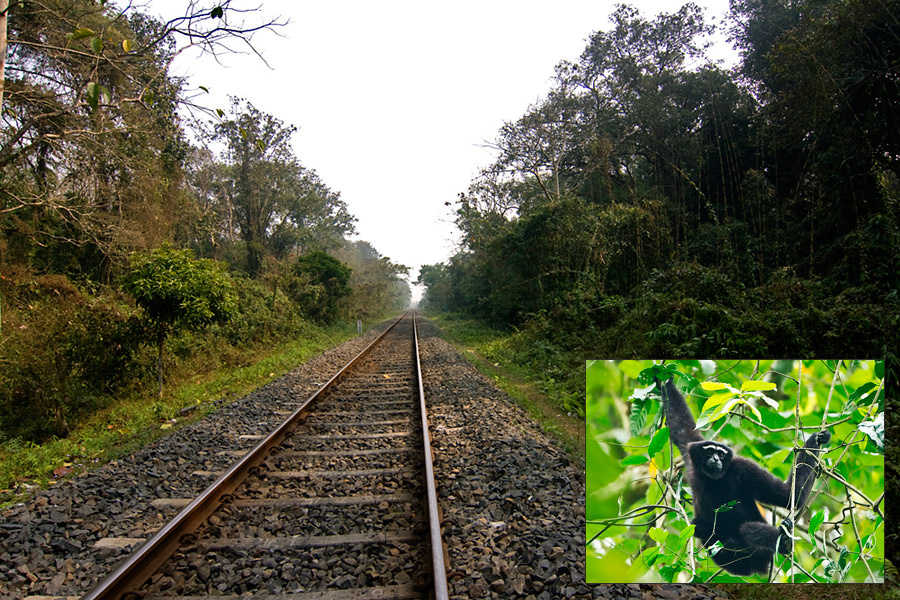
This is an image of the railway line cutting through the Hollongapar Gibbon Wildlife Sanctuary, taken in Feb 2012. One needs to understand the behaviour of Hoolock Gibbons and the habitat to understand the destruction caused by the railway line.
Hoolock Gibbons are the only apes found in India (apart from a billion humans of course!). They have long forelimbs and shorter hind limbs which are very conducive for these animals to move around the forest by swinging along the branches on the canopy of the forest. They are almost entirely arboreal and come down to the ground only in exceptional situations. They even quench their thirst from the water content in the leaves on the canopy. Hence a well connected dense rainforest is essential for the survival of this species.
The Hollongapar sanctuary was once contiguous with the forests of Nagaland. Extensive logging and establishment of tea gardens all around the sanctuary have completely fragmented and isolated this patch of forest from the forests of Nagaland. Today, this sanctuary measures about 20 sq kms (20.98 sq km officially but the actual area is around 19 sq km) and is fragmented into 5 segments.
In 1887, the above railway line was laid which further divided the forest. Given the nature of the gibbons to move about only by swinging along the branches, this railway line has effectively limited the movement of the gibbons and the groups have been split on either side of the railway line. There is a lot of inbreeding in these groups, since that is the only way forward. The railway department is considering creating “canopy bridges” over the railway line which the gibbons can use to move about, but that plan has been tabled for a long while now without much progress. Little is known if such “canopy bridges” would help the gibbons to move to the other side.
When we walked in these forests looking for gibbons, we found 2 groups calling out to each other from either side of the forests. We were told by our guide that they have been doing this everyday! The entire forest comes alive when these gibbons start calling out in unison, an experience that can never be expressed in words. It is sad to see that we have put our closest relatives through such a terrible situation, that they are completely dependent on our intervention for their survival.
Inputs from Uddipana Kalita, Post Graduate Student, Wildlife Biology and Conservation, WCS-India Program, NCBS, Bangalore.

 CI is a non-profit, non-commercial portal that aims to facilitate wildlife and nature conservation by providing reliable information and the tools needed to campaign effectively.
CI is a non-profit, non-commercial portal that aims to facilitate wildlife and nature conservation by providing reliable information and the tools needed to campaign effectively.
Chosen as 'Picture of the Week'
The Hollongapar Gibbon Wildlife sanctuary in Jorhat district, Assam is only 20 sq km and is fragmented into 5-segments. Given the nature of the gibbons to move about only by swinging along the branches, this railway line has cut-off the movement of the gibbons and the groups have been split on either side of the line.